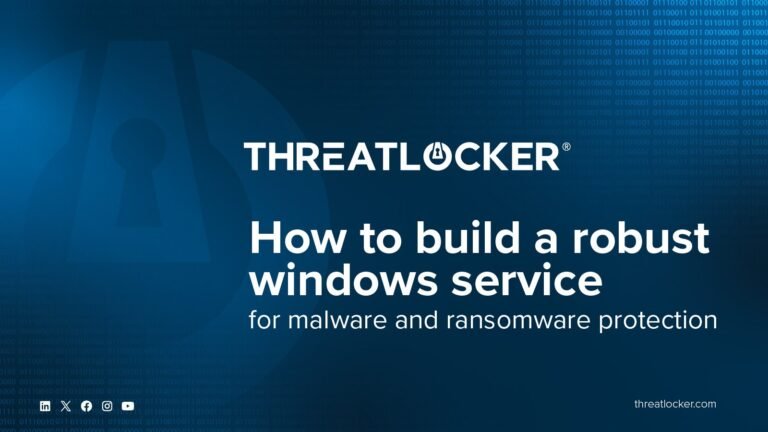Top Highlights
-
Minimal Attack Surface: Design the Windows Service with the least privilege principle to reduce vulnerabilities, ensuring it only has the necessary permissions for its functions.
-
Real-Time Monitoring: Incorporate continuous monitoring of system activities to identify and respond to threats instantly, allowing for immediate isolation and remediation of suspicious behavior.
-
Robust Architecture: Ensure a strong framework with components like a Monitoring Engine, Analysis Module, and Response Unit to analyze data, detect threats, and maintain detailed logs for compliance and investigation.
- Utilize Development Tools: Leverage tools like Visual Studio, Windows APIs, and machine learning libraries to enhance service capabilities, offering thorough visibility and advanced threat detection against malware and ransomware.
Underlying Problem
In a recent article authored by Farid Mustafayev, a Windows Service Developer, key principles for designing security-focused Windows Services are elucidated, highlighting a framework aimed at fortifying system defenses against burgeoning cyber threats. The narrative underscores several cardinal design tenets such as maintaining a minimal attack surface through the least privilege principle, ensuring real-time monitoring and threat response capabilities, and enhancing service robustness against crashes and malicious incursions. Mustafayev delineates the architecture of a robust security service, detailing essential components like a Monitoring Engine, Analysis and Detection Module, and a Response and Mitigation Unit, all integral to continuously surveilling system activities and executing immediate countermeasures when potential threats are detected.
The discourse is particularly relevant to developers tasked with fortifying Windows Servers amidst a climate of escalating cyber threats. By leveraging advanced tools and frameworks—such as .NET for development, Windows APIs for low-level system interactions, and machine learning libraries for sophisticated behavior analysis—Mustafayev offers a comprehensive guide aimed at empowering developers to construct effective Windows Services. The write-up serves as both an instructional narrative and a call to action, urging developers to adopt a vigilant approach in securing server infrastructures against malware and ransomware, thereby ensuring overall system integrity and operational continuity.
Risk Summary
The ramifications of a compromised security-focused Windows Service extend far beyond individual organizations; they pose a tangible threat to the entire business ecosystem. If such a service were to falter, it could facilitate unauthorized access to sensitive data, resulting in breaches that not only damage the reputation of the affected organization but also erode consumer trust across the sector. Furthermore, a successful attack could incite operational disruptions, cascade into downtime for interlinked systems, and trigger compliance violations that attract hefty fines. Vulnerable users and businesses may endure increased costs associated with remedial actions, operational delays, and heightened security measures. Ultimately, the ripple effects of a breach can lead to a systemic risk landscape where cybersecurity vigilance is mandated not only by regulatory frameworks but also by the imperative to uphold collective resilience against evolving threats.
Possible Action Plan
In the realm of cybersecurity, prompt and effective remediation is crucial for safeguarding systems, especially when architecting a Windows Service designed with security in mind.
Mitigation Steps
- Code Review
- Threat Modeling
- Penetration Testing
- Secure Coding Practices
- Regular Updates
- Configuration Management
- Access Controls
- Incident Response Planning
NIST Guidance
NIST Cybersecurity Framework (CSF) emphasizes the importance of identifying and responding swiftly to vulnerabilities to enhance resilience. For deeper insights, refer to NIST Special Publication 800-53, which provides comprehensive guidelines on security and privacy controls.
Continue Your Cyber Journey
Discover cutting-edge developments in Emerging Tech and industry Insights.
Understand foundational security frameworks via NIST CSF on Wikipedia.
Disclaimer: The information provided may not always be accurate or up to date. Please do your own research, as the cybersecurity landscape evolves rapidly. Intended for secondary references purposes only.
Cyberattacks-V1

